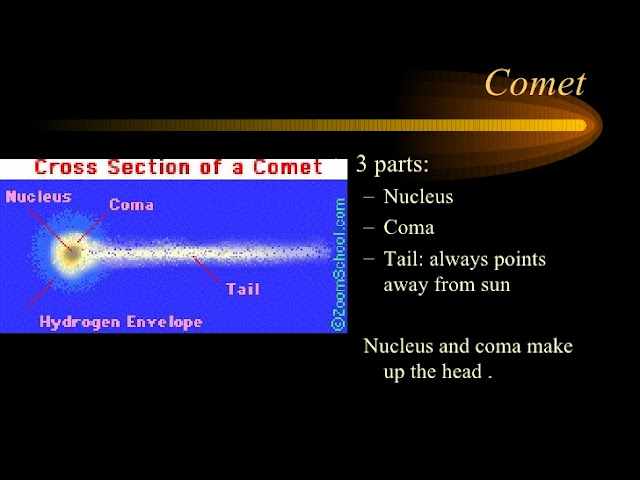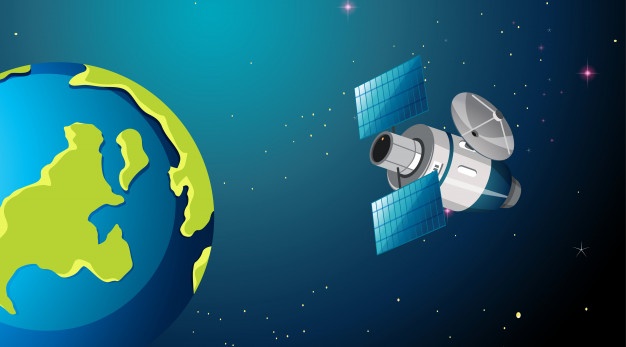What is satellite? Types of Satellites
In this article we will learn what
are satellites?
We will know about Types of
satellites.
We will learn about difference
between Natural vs artificial satellites.
Furthermore we will discuss about Types
of Artificial and Natural satellites.
At the end of this Article we will
learn about orbits of Artificial Satellites.
Are you ready to read this Interesting
Science article?
Yes?
All
stars, the Sun, the Moon, the Earth, all planets and satellites are called heavenly
bodies. The heavenly bodies are moving in unimaginable vast space-universe.
The Sun, the planets, and their moons are the largest objects in the solar
system. But asteroids and comets are the smaller parts of the solar system.
Satellites
Any
heavenly body that revolves around a planet is called a satellite. The
Moon is a natural satellite of the Earth that orbits the Earth. Mars, Jupiter, Saturn,
Uranus and Neptune have their own satellites too.
Natural
Satellites
Beside
moons of the planets, some other natural satellites are also moving around the
Sun. These are asteroids, Comets and meteoroids. Some of them can be
seen from the Earth.
 |
| Sun orbiting the Earth |
Asteroids
An
asteroid is a piece of rock that orbits the Sun between Mars and Jupiter. The
astronomers have discovered thousands of asteroids. Asteroids are made
of rock, metals or minerals. Most of the asteroids orbit the Sun between Mars
and Jupiter in a wide band. This band is called the asteroid belt. The
asteroid belt is about 1500 thousand kilometers wide. Asteroids come in all
shapes and sizes. Some asteroids nave diameter up to 1,000 Kilometers but Some
are very small in diameter. Two asteroids are seen from the Earth without the
help of a telescope. These are Ceres and Vesta. Ceres is the largest asteroid
ever discovered. Its diameter is about 933 kilometers. Vesta is half the size
of Ceres. Some astronomers suggest that the asteroids are leftover matter from
the time the planets were being formed. We can say that asteroids may be the
pieces of our solar system that never formed a planet.
 |
| Asteroid Belt between mars and Jupiter |
Comets
Besides
planets and asteroids some other objects also orbit the Sun. These are comets.
A comet is a large ball consist of ice and dust that orbits the Sun. Comets
move around the Sun in an elliptical path. They take a very long time to complete
their one orbit around the Sun.
Comets
probably come from the far, outer edges of the solar system. They are only seen
when they come close to the Sun.
A
comet consist of three parts: a head, coma and a tail. The head is made of ice,
particles of rocks and gases. The heads of most comets are only a few kilometers
wide.
When
a comet comes near the Sun, gases escape from its head due to heat of the Sun.
A large, fuzzy, Circular shape cloud around the head of a comet is called the
Coma.
During
orbiting near the Sun, a long tail of gases and dust particles is formed behind
the comet. This tail can be millions of kilometers long. The tail of a
comet points its direction away from the Sun.
Comets
far away from the Sun bear no tail .Most of the time comets remain far away
from the Sun.
A
comet known as Comet Halley has appeared in the sky many times appears after
every 76 years. It was seen in 1986 for the last time.
 |
| 3 parts of a comet |
Meteors
Uncountable
number of small heavy bodies also orbit the Sun. These are called
meteoroids. A meteoroid is a piece of rock or metal that orbits the Sun. Meteoroids
are scattered in different orbits in space. Most of them are too small to be
seen from the Earth. We often see a shooting star or fireball in the sky. In
fact, it is not a star but a meteoroid entering the atmosphere of the Earth. Owing to the friction of
air, it gets fire.
A meteoroid
when enters the atmosphere of our Earth, it is called a meteor. A meteor is a stray particle which
comes from the asteroid belt and enters the atmosphere of the Earth. Owing to the friction of
air, the meteor gets fire and a trail of light is seen. Some people
call them falling stars, shooting stars or fireballs. We can view 20 to 30
meteors on clear night. But we have to move away from the glare of city lights.
Most
meteors entering our atmosphere burn up 50 to 100 kilometers above the surface
of the Earth.
It adds tons of dust into our atmosphere every day. Sometimes a few big enough meteoroids do strike Earth's
surface. These are called meteorites. A meteorite is a meteor that strikes Earth's surface.
 |
| meteoroid falling in the sky |
Artificial
Satellites
There
are many man-made satellites orbiting the Earth. These are artificial
satellites. Artificial satellites are very important for mankind. The first artificial
satellite was sent by Russia in 1957. It was named Sputnik-1.
Launching
of this satellite opened new horizons for the scientists. After a few years of
launching Sputnik-1, Russia sent Yuri Gagarin, the first man into space.
Sputnik-I was the first small step of man in space since then. Thousands of
satellites have been sent into space.
Kinds
of Artificial Satellites
Scientists
have sent many satellites which move around the Earth. These satellites help scientists to learn
about weather and many more things on the Earth.
Sputnik-1
On
October 4, 1957, Russia sent the world's first artificial satellite Sputnik-1
into space. The name comes from a Russian word for “travel” companion of the
world." It weighed just 83 kg. It carried a thermometer and two radio
transmitters which sent information about the atmosphere to the Earth, Its
two transmitters only functioned for 21 days. After 57 days in orbit, it was
destroyed.
Explorer
1
Explorer
1 was the first satellite launched by the United States of America. It was
send into space on January 31, 1958. It weighed only 14kg. Explorer 1 sent
information about the radiation environment in Earth orbit.
Geostationary
Satellites
Geostationary
satellites move at a height of about 36,000 km above Earth. At this
height they move around the Earth at the same speed as the earth moves around
its axis. This satellite seems to be stationary. They are used as communication
satellites. Pakistan has launched its first geostationary on August 11,
2011.
Landsat
Satellites
The
Landsat satellites is a series of satellite missions since 1972 Landsat
satellites have collected information about Earth from space. Landsat satellites
have taken photographs of Earths continents and satellite that follows
surrounding coastal regions.
Communication
Satellites
Communication
satellites have a great effect on our daily lives. They link remote areas the
Earth with telephone and television. Newspapers are typed and transmitted to printing
machines via satellite in some countries.
Polar
Satellite
Polar
satellite was launched on February 24, 1996 by America. Polar satellite studies
atmosphere of the Earth in polar orbit after every 18 hours. Polar Satellite
will help scientists to protect future satellites from atmospheric dangers.
 |
| Artificial Satellite orbiting the earth |
Orbits
of Artificial Satellites
Artificial
satellites move around the Earth in different orbits. Some orbits are given here:
Geostationary
Orbit: The orbit in which an artificial
satellite completes the same time that the Earth takes to complete one spin,
i.e. 24 hours, is called Geo stationary orbit. A satellite in this orbit
looks stationary from the Earth.
Polar
orbit: Polar orbits passes over the north
and south poles of the Earth. So satellite moving in this orbit
can scan the whole Earth during their motion.
Eccentric
Orbit: The scientific satellites move in
eccentric orbit to measure magnetism and electric field of the Earth.
Low
Earth orbit: This orbit is
very close to the Earth. Low Earth orbit is used by space shuttles, space
stations, and the Hubble Telescope. These satellites may or orbit the
earth every 90 minutes.
Satellite
receiving station: A station on
the earth which receives messages from the satellites is called a satellite
receiving station.
Launching
of a Satellite into Space
Launching
of an artificial satellite into space is not very easy. This project requires a
lot of money. The satellite is mounted on the top of a very high speed rocket.
A rocket has many parts. Each part of the rocket falls off after pushing
the satellite through the atmosphere into space. After a certain period of time
all the artificial satellites will burn up like meteors.
Key Milestones
in Space Technology
Here
is a look at some of the key milestones in space technology
October
4, 1957: Soviet Union launches Sputnik- 1
January31,
1958: United States launches Explorer 1
April
12, 1961: Yuri Gagarin becomes the first human to enter space and return on
earth safely.
July
16, 1969: Launch of Apollo 11. It puts first man on the Moon.
May
14, 1973: United States launches its first space station, the Skylab.
June
18, 1983: Sally Ride becomes first American woman in space science.
February
19, 1986: Mir space station launches.
September
30, 2003: First privately owned spaceship launches.
August
4, 2007: Phoenix lander lands on Mars.


0 comments:
Post a Comment